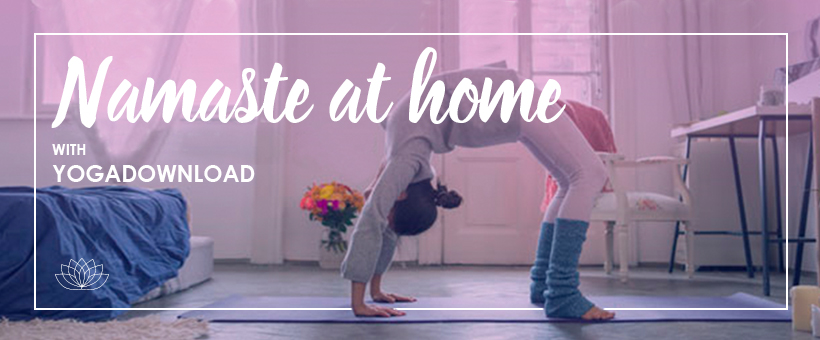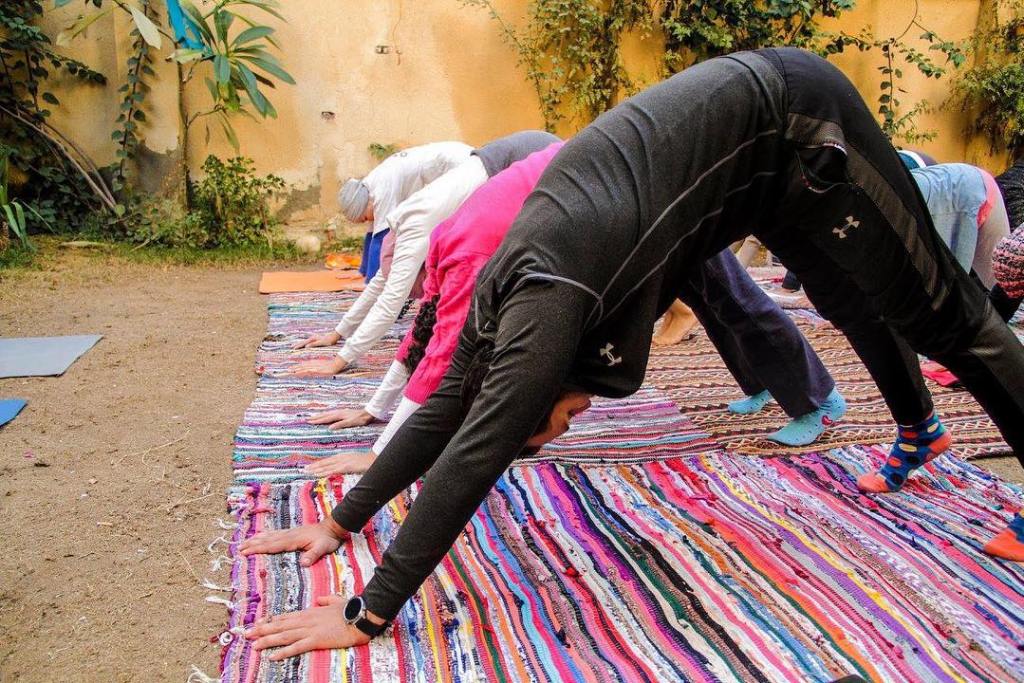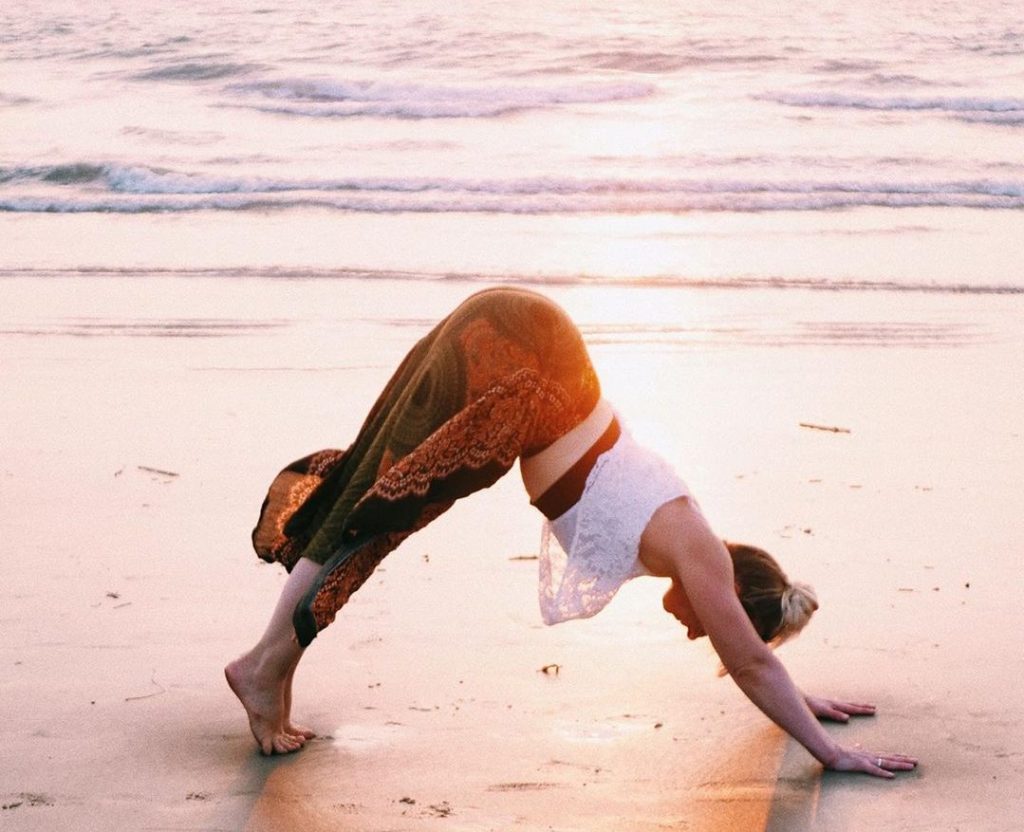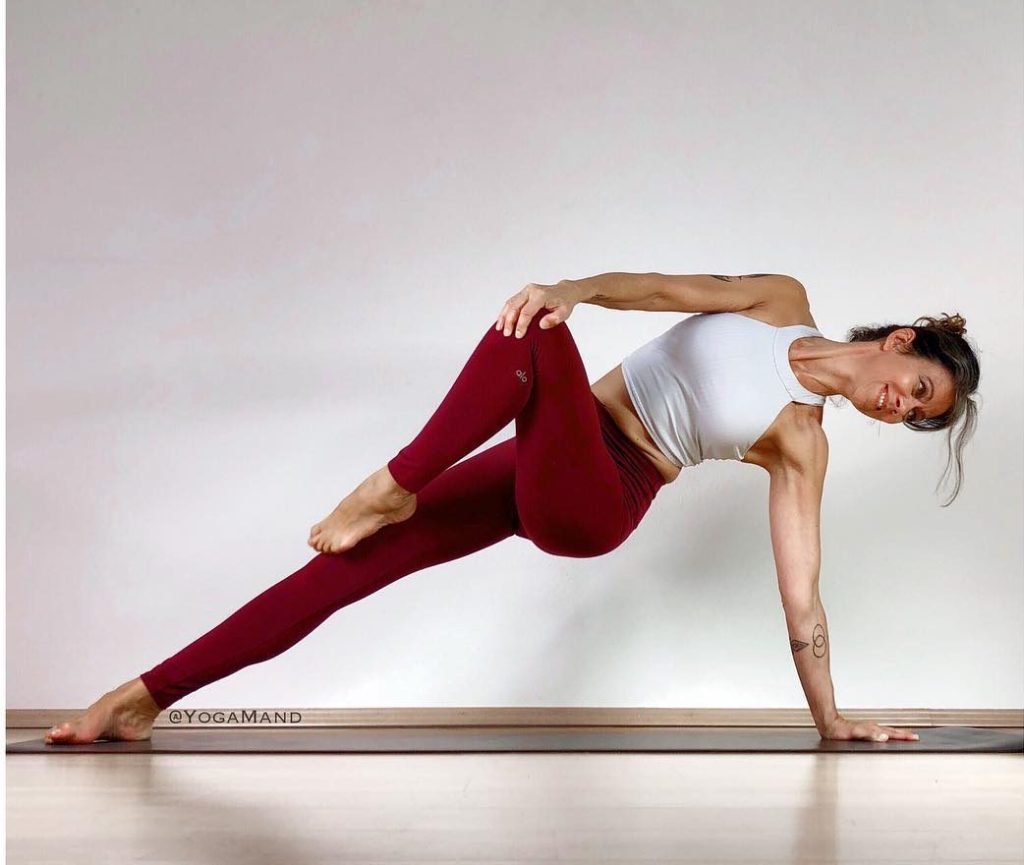Vinyasa Yoga
When we want to start yoga, we will inevitably ask ourselves one day the question of the style of yoga that suits us. Often, we choose it according to the room closest to our home, but we can always discover others over time. Personally, I have tried many different styles of yoga and I think that all of them have been able to bring me something at some point in my life. So I couldn't say that there is an ideal type of yoga... However, there is one that is becoming more and more popular in the West, and that is Vinyasa Yoga. What is Vinyasa Yoga? What does it correspond to? I propose you today an article to better understand Vinyasa.
Imagine, a room full of students moving in rhythm at your side. A musical background, either lively or relaxing, that follows you in the movements of your body. As you inspire, you rise up, well anchored on your supports. And then, as you exhale, you let all the tensions go away.
The music gently moves away, you are fully present to the rhythm of your body in space. Silence covers the room. You manage to hear, the breathing of your neighbors. Even, to detect your own breath between two movements. The air, so accessible, so habitual, becomes here an object of consciousness and covetousness.
Perspiration beads on your forehead, you start to warm up. With each new greeting to the sun, you let your energy circulate a little more. On the carpet, your breathing is not only a function. It's a vehicle for this flow that circulates to your fingertips. Through your body. With every movement.
And then you lie down, tired, soothed, in Shavasana. You completely relax your body on the floor... You forget everything that is happening outside, perfectly present to yourself.
This is what a Vinyasa Yoga class can look like. If you would like to know more, here is its history and characteristics in order to understand if it is right for you.
The origins of Vinyasa Yoga
When you begin yoga, you may discover very different ways of practicing between a Yin Yoga or Asthanga class. To say the least, the styles of yoga are varied. However, in the philosophy of yoga, there is one value that connects all the streams of yoga together: liberation (Moksha). Thus, each type of postural yoga is working towards this goal. But each tries to achieve this liberation in its own way. The practices to achieve it will thus be very varied, but it is also the understanding of what this state means that will differ from one yoga to another.
Vinyasa Yoga is therefore one of those practices that would allow, in its most accomplished form, liberation. To understand the birth of Vinyasa Yoga, one must go back to the origins of yoga in India.
In history, Hatha Yoga is considered to be the basis of all styles of yoga. This term actually means "postural yoga" in the Sanskrit language. From this definition, we find two main lines of postural yoga:
- Hatha Yoga, which then became a particularly ancient and well-known style of yoga.
- and the more recent Asthanga yoga, which is a dynamic style of yoga.

At the beginning of the twentieth century, Krishnamacharya offered the world the beginnings of Vinyasa Yoga by transmitting, through his practice, his understanding of the Patanjali Yoga Sutras and the Bagavad Gita, two founding texts of yoga. He is the first to propose postures in the form of a sequence, rhythmed by the breath. This corresponds to the definition of Vinyasa Yoga as we know it today. However, it is not him who invented this style of yoga.
His students, Pathabi Jois and BKS Iyengar, will become important figures of yoga in the world and will contribute to the evolution of postural yoga practices. Pathabi Jois will be at the origin of Asthanga-Vinyasa Yoga, while BKS Iyengar will bring Iyengar Yoga into being.
Thus, although Krishnamacharya never left his native India, he is considered to be the father of modern yoga thanks to his teaching, which contributed enormously to the development of yoga in the West.
What is Vinyasa Yoga?
The word Vinyasa could be translated in two ways.
- On the one hand, it means "to organize something in a certain way".
- On the other hand, it can mean "linking breath to movement".
It is the most popular yoga in the West, and one of the most practiced today. But what does it correspond to?
Its translation teaches us several things. On the one hand, we find the idea of a sequence, which is essential in Vinyasa yoga. But its meaning is deeper: this sequence must make sense.
- Meaning in the postures, which are often linked together by a common thread.
- And meaning for the practitioner.
Vinyasa Yoga would therefore consist of making movements with a certain intention. How do you manage to move with an intention would you tell me? Well for that, every time you step on your Vinyasa Yoga mat, you will be able to dedicate your class to something or someone or write it down as a wish that will guide your practice. This idea is at the very foundation of this dynamic yoga.
On the other hand, if there is one thing to remember about Vinyasa, it is the notion of breath. In Vinyasa yoga, breath is used as a tool. It allows us more presence, more consciousness and will be the source of many benefits on the body and mind.
In the postures of Viyasa, we always coordinate the movement and the breath to move from one pose to another. During the upward movements, where the gaze is turned towards the sky, one breathes in. While in the downward or bending movements, we exhale. At first, it will seem complicated to understand the rhythm of the movements in relation to your breathing. This is completely normal, because it is not a usual way of moving.
Remember that from the moment you do a movement in yoga and try to combine your breathing with it, you are doing Vinyasa Yoga. It doesn't have to be spectacular... Your yoga is perfect this way.

Where does Vinyasa Yoga come from?
As you have seen, the practice of Vinyasa Yoga is a direct descendant of Ashtanga Yoga. I must therefore tell you a few words about this style of yoga, which I will explain at greater length in a future article.
Ashtanga Yoga was created by Patthabi Jois in Mysore, India. Originally, this practice was reserved for young men and would even have been part of the physical training to prepare men to go to war. That's why you will certainly find it quite physical and a bit military.
Indeed, in Ashtanga classes you will chain postures in a rather physical way, in a sustained rhythm. This dynamic yoga practice will work on strength, flexibility but always with an awareness of the breath. The breath guides you in each posture. For example, we will often hold a yoga position for 5 breaths.
Ashtanga Yoga is quite specific because it is very categorized. There are several series of postures, which are always in the same order. Between the different postures, we will do a typical sequence called a Vinyasa. I'll explain what this is about a little further down.
Vinyasa yoga is directly inspired by Asthanga. But the fundamental difference of this type of yoga is that the postures are more varied and the rhythm a little less sustained than in Asthanga. One could say that Vinyasa is a more fun version of Asthanga. Teachers can create a more creative sequence, with the postures they want, often based on a specific theme. For example: heart opening, liver detox, hip opening. So we find the idea of a common thread expressed above.
In Vinyasa Yoga, the sequence of postures is done in a fluid and rhythmic way, a bit like a dance. In an advanced Vinyasa practice, there are few breaks during the session. To accompany this rhythm in the body movements, music is often included in the classes. This yoga practice is also very active and is done at a fairly steady pace as well. It is therefore ideal for toning up and building deep muscles while lengthening the muscles. Personally, I didn't know that I could sweat so much during yoga class...
Who is Vinyasa Yoga for?
This type of yoga is quite physical. Is it suitable for you if you are not athletic or if you are over 60 years old? You are the only person to know. Yes, Vinyasa yoga is a dynamic yoga. But don't think that you can do all your postures without any respite for an hour or an hour and a half. It also allows you to relax and unwind through meditations, integrated into the classes, softer sitting postures and final relaxation. There are Vinyasa yoga classes open to beginners where the postures proposed are simple to perform and the pace is slower. I therefore believe that Vinyasa is a yoga open to those who are looking for physical activity, whatever their level.
Unlike Asthanga, Vinyasa Yoga will be perfect for those who are always looking for something new or who get tired easily. But compared to Hatha Yoga, it will be less gentle and will make the muscles work harder. Yes, you will certainly have aches and pains after your Vinyasa Yoga class. (That doesn't mean that it won't be the case in Hatha or Yin Yoga).

Vinyasa
Vinyasa is also a term that refers to a specific sequence of postures found in Vinyasa and Asthanga yoga classes. Often your teacher will tell you, "Do a Vinyasa or go straight to dog upside down". It is actually a transition between several postures. This sequence of postures is as follows:
- Kumbhakasana, the board.
- Chaturanga-Dandasana, the Yogi pump.
- Urdhva-mukha-svanâsana, dog head up.
- Adho-mukha-svanâsana, upside down dog.
However, there are variations to this sequence, such as the posture of the cobra instead of the dog upside down. Or Chaturanga Dandasana on one leg (advanced yogis) or knees on the ground (beginner yogis). Either way, your Vinyasa yoga class will include this transition several times, which makes sense between the other postures. So, if you were wondering why your yoga teacher has so many of these devilish postures, you now know that they are the foundation of this dynamic type of yoga.
The styles of yoga derived from Vinyasa Yoga
Many different styles of yoga today are derived from Vinyasa. They are often quite recent because Vinyasa yoga is itself a recent practice (it was born in the 20th century). Slow flow, Power flow... You won't have finished reading this word "Flow", married to all sauces, when you see the schedules of the yoga studios. Among the infinite variations of Vinyasa Yoga, there are three known styles:
- Jivamukti Yoga, a yoga created in 1984 by Asthanga practitioners David Life and Sharon Garon. It is a yoga with lots of songs and yoga philosophy.
- Power Yoga, created by the American Baron Baptiste, which is a practice quite close to fitness (abs, sheathing), but which takes up some principles of yoga philosophy.
- Prana flow, created by Shiva Rea, which consists of a very fluid sequence, highlighting the energies and elements.
Nowadays, there is a lot of talk about "Flow", to refer to Vinyasa yoga. Therefore, you should know that each yoga class with this name will necessarily be a Vinyasa class or a derivative of this type of yoga. With this term, we find the idea of a rhythm, a certain fluidity, a sequence.
The notion of Flow also refers to the state of flow, well known to athletes and followers of positive psychology. It refers to a psychological state in which one engages in such great concentration that one is fully present at what one is doing, losing awareness of the rest. It is a state in which one finds oneself in perfect immersion, as if out of time, out of the race of the mind and beyond the limits of the physical body. This state can be related to "ecstasy", often described in sacred texts. It's up to you to see if your next Vinyasa class can take you there.

You now know a lot about Vinyasa Yoga. Of course, this article could not give a complete definition of the subject, but I hope it will give you an idea of what Vinyasa Yoga is so that you can understand if it can be done for you.


